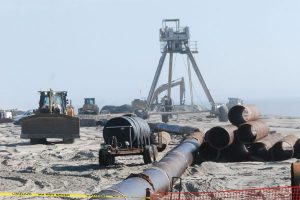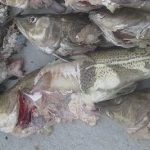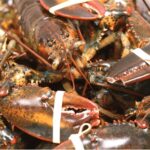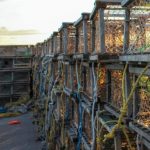Tag Archives: Atlantic sea scallops

The price of scallops? ‘The sky’s the limit’
What winter catch is delicate in flavor with hints of ocean in every morsel and very, very pricey? Atlantic scallops are breaking the piggy bank this season, Mainers are reporting, and harder to find. A pound of 10- to 20-count at the Ellsworth Shaw’s was advertised this week at $34.99, while some locals who usually buy directly from fishermen, for about $20 a pound, are finding them unavailable. Brooklin scallop fisherman David Tarr said those customers can ask in March and he might have some to sell to them. But for now, the large, prized U10s — that’s under 10 sea scallops to a pound — are what he’s catching and selling to his dealer for significantly more than $20. And plenty of Maine fishermen are selling to the market in New Bedford for $45 to $53 a pound for U10s. more, >>CLICK TO READ<< 09:17
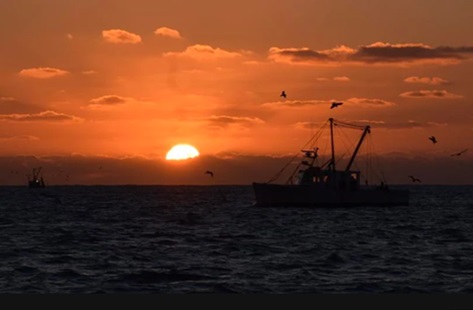
Scallop season is underway
In pitch-black morning, the scallop draggers start heading out Penobscot Bay to be ready one-half hour before the sun rises in Augusta to drop their drags overboard and begin a day’s work. Daylight here already broke the horizon as the scallop fishery opens for the day in the Gulf of Maine. “When the season opens, it’s like the first day of school,” said David Tarr, a scalloper off Naskeag Point and a member of the state’s scallop advisory council. Now two weeks into the season, and Tarr says, “I think it’s been a good opening. Boats are keeping local. Whether dragging or diving, the daily limit is 15 gallons of meat that sells anywhere from $12 to $23 per pound, depending on its size. 8 photos, more, >>click to read<< 07:55
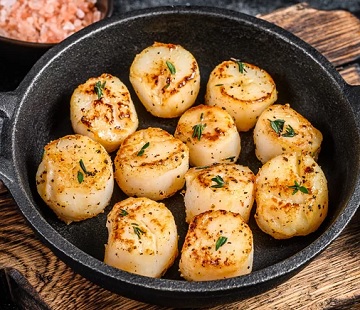
8 Types of Scallops – What to Know About Them and Ways to Cook
While they are no longer regarded as rich man’s food, they are still pretty pricey. And this is primarily due to the supply-and-demand concept. More importantly, they are full of health benefits. As impressive as scallops are, they are a confusing species. From dry versus wet scallops to divers and day boats, there’s a lot to them. We are here to clear the air. This article discusses the common scallop varieties and ways to cook each mollusk. We’ll also discuss how you can store them and how to avoid buying fake scallops. Yes, that’s right: Fake scallops exist. >click to read< 14:32
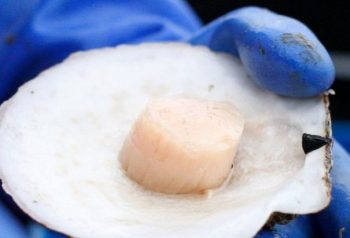
America’s got scallops: Catch is up, consumers shelling out
America’s harvest of scallops is increasing to near-record levels at a time when the shellfish are in high demand and the value of the fishery has surged in recent years. Sea scallops, harvested mostly by boats from the cold Atlantic Ocean, are the target of one of the most valuable fisheries in America. New data from the National Oceanic and Atmospheric Administration says the harvest topped 58.2 million pounds last year, the highest total since 2011 and the fifth-highest in history according to federal statistics going back to 1945. >click to read< 15:30

SouthCoast Man of the Year: Kevin Stokesbury continues to seek solutions to fishing industry challenges
It’s pretty well known around these parts that homegrown research proved the ocean held more Atlantic sea scallops than federal regulators thought. And a lot of folks know that the value of those succulent bivalves has made New Bedford the highest-grossing fishing port in America for 18 years running. Starting in the late 1990s, Professor Kevin Stokesbury of the School for Marine Science and Technology at UMass Dartmouth, working with SMAST founding dean Brian Rothschild, developed a video technique to count scallops on the seafloor without harvesting or killing them. Along the way, he pioneered a partnership with local fishermen. >click to read<11:20
Research set-aside helps sustain Atlantic sea scallop fishery
 A recent article in Nation’s Restaurant News calls the scallop “the mollusk of the moment,” but just 20 years ago, the U.S. fishery for Atlantic sea scallops was unsustainable, with the population near record lows and fishing at a record high. Now, a research set-aside program, funded entirely by proceeds from selling a , is helping to ensure that the fishery remains healthy. Read more here 09:17
A recent article in Nation’s Restaurant News calls the scallop “the mollusk of the moment,” but just 20 years ago, the U.S. fishery for Atlantic sea scallops was unsustainable, with the population near record lows and fishing at a record high. Now, a research set-aside program, funded entirely by proceeds from selling a , is helping to ensure that the fishery remains healthy. Read more here 09:17

































